What is a Loading Dock Leveler?
What is a Loading Dock Leveler? Understand the Basics of Dock Levelers.
When it comes to the efficient and safe loading and unloading of goods, “what is a loading dock leveler?” might be a question that comes to mind. Loading dock levelers play a crucial role in bridging the gap between the dock and the transport vehicle. Choosing the right dock leveler can significantly impact the overall productivity and safety of your warehouse operations. But how do you know which type of dock leveler is best suited for your specific needs?
In this blog post, we will guide you through the basics of what is a loading dock leveler, the various types available, and the factors to consider when choosing the right solution for your loading dock. By the end, you will have a comprehensive understanding of dock levelers and their importance in ensuring a seamless connection between the dock and the truck.
Short Summary
-
Loading dock levelers are adjustable pieces of equipment designed to bridge the gap between the dock and truck for efficient transfer of goods.
-
Different types, such as hydraulic, mechanical, air-powered and specialized ones offer unique features & benefits suited to specific needs.
-
Maintenance costs vary significantly depending on type & components. Professional installation is essential for optimal performance & safety.
Defining Loading Dock Levelers
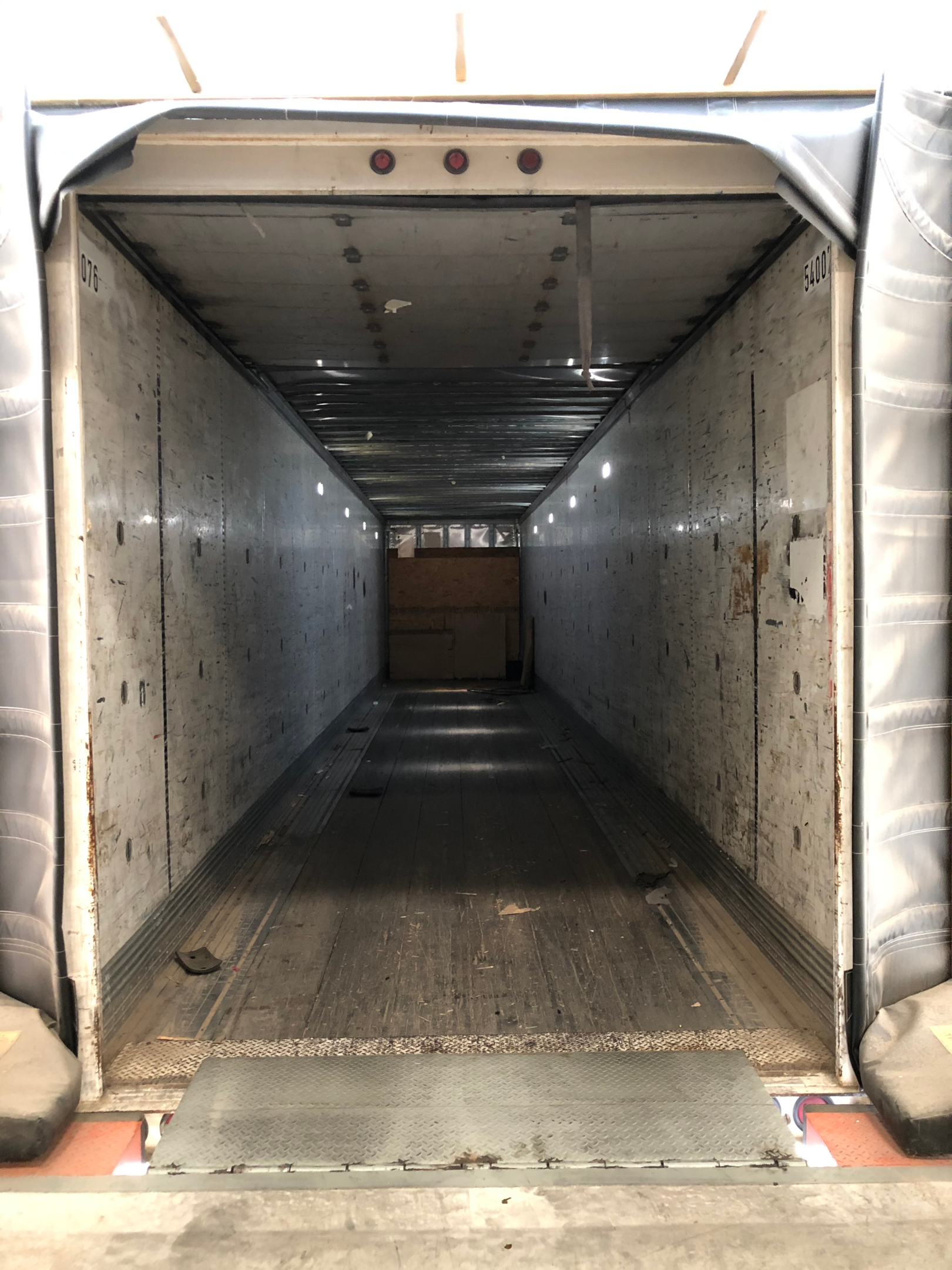
A loading dock leveler is a piece of equipment designed to bridge the gap between the dock and the truck, enabling the safe and efficient transfer of goods during loading and unloading operations. Dock levelers come in different forms, such as dock plates and dock levelers. While dock plates are flat pieces of metal used to bridge the gap, dock levelers are adjustable equipment that can be raised and lowered to create a seamless connection between the dock and the truck.
When selecting the correct dock leveler, several factors should be taken into account, such as weight capacity, size of the dock opening, frequency of use, type of vehicles accessing it, type of dock (indoor or outdoor), type of material handling equipment employed, and the cost of installation and maintenance.
In the following sections, we will explore the different types of dock levelers and their specific applications and benefits.
Types of Loading Dock Levelers
There are various types of loading dock levelers available, including hydraulic, mechanical, and air-powered, each with its own advantages and suited for different applications.
In the following subsections, we will delve into the specifics of these main types of dock levelers, shedding light on their benefits and suitability for different loading dock situations.
Hydraulic Dock Levelers
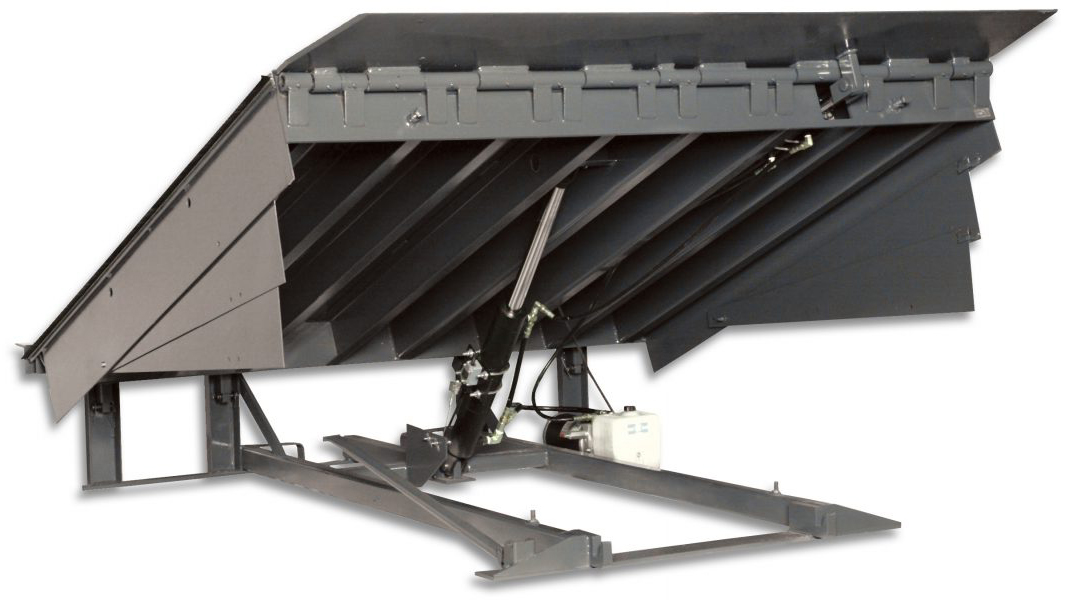
Hydraulic dock levelers, also known as hydraulic pit levelers, are known for their smooth operation, low maintenance requirements, and high durability. These qualities make them an ideal choice for high-volume loading docks, where efficiency and reliability are of utmost importance. A hydraulic pit leveler utilizes hydraulic cylinders to raise and lower the deck, providing a precise and easy-to-control operation.
In addition to their convenient operation, hydraulic dock levelers require minimal upkeep compared to other types of dock levelers, such as mechanical and air-powered levelers. This can result in lower long-term maintenance costs and increased productivity for your loading dock operations.
Mechanical Dock Levelers
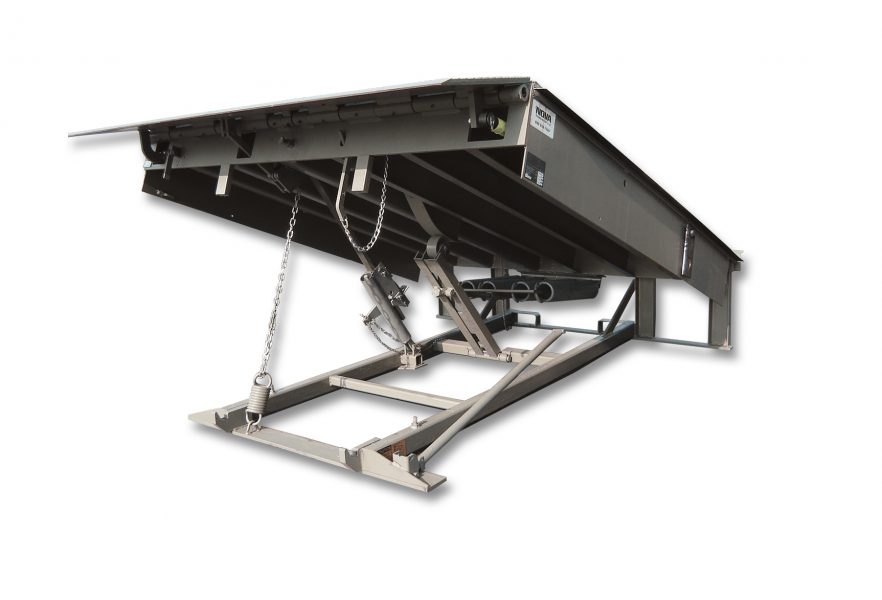
Mechanical dock levelers, also known as mechanical levelers, are a cost-effective and reliable option for loading docks, though they may necessitate more maintenance and manual effort than other types of levelers. They operate using a pull chain activation system, which raises the deck and allows the operator to walk the deck back down to the bed of a trailer or to a stored position.
The affordability of mechanical dock levelers makes them an attractive option for many businesses. However, it’s important to keep in mind that their increased maintenance requirements and manual operation may result in higher long-term costs compared to hydraulic or air-powered dock levelers.
Air-Powered Dock Levelers
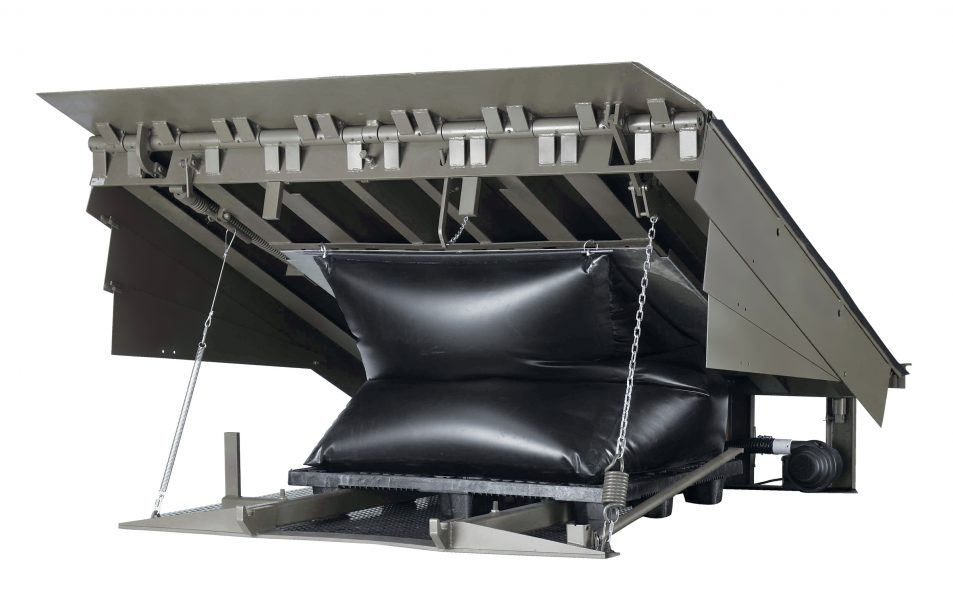
Air-powered dock levelers balance cost and performance, offering easy operation and minimal maintenance requirements. They utilize an air bag or bellows system to elevate the deck, making them a convenient and efficient option for many loading dock operations. These levelers are also more durable than mechanical dock levelers, resulting in a longer life expectancy and potentially lower long-term costs.
The air-powered dock levelers offer the advantages of air-powered technology at a price that is competitive with most mechanical dock levelers. This makes them an attractive option for businesses seeking a balance between affordability and performance.
Specialized Dock Levelers
In addition to the main types of dock levelers, there are specialized dock levelers designed to cater to specific needs, such as vertical storage for temperature-sensitive applications, edge-of-dock for light-volume loading bays, and pit-style for recessed warehouse docks.
In the following subsections, we will explore these specialized dock levelers in more detail, highlighting their unique features and benefits.
Vertical Levelers

Vertical levelers are designed to store the dock leveler in a vertical position when not in use, providing an ideal solution for temperature-sensitive applications. By storing the leveler vertically, a complete seal is maintained, keeping the pit free of debris and rodents, and enhancing environmental control, cleanliness, and security.
Hydraulically operated, vertical storing dock levelers offer increased environmental control for temperature-sensitive applications, such as cold storage facilities or warehouses with strict temperature and humidity requirements. Their unique design helps maintain the desired temperature and minimize energy loss, resulting in reduced energy costs and improved product quality.
Edge-of-Dock Levelers
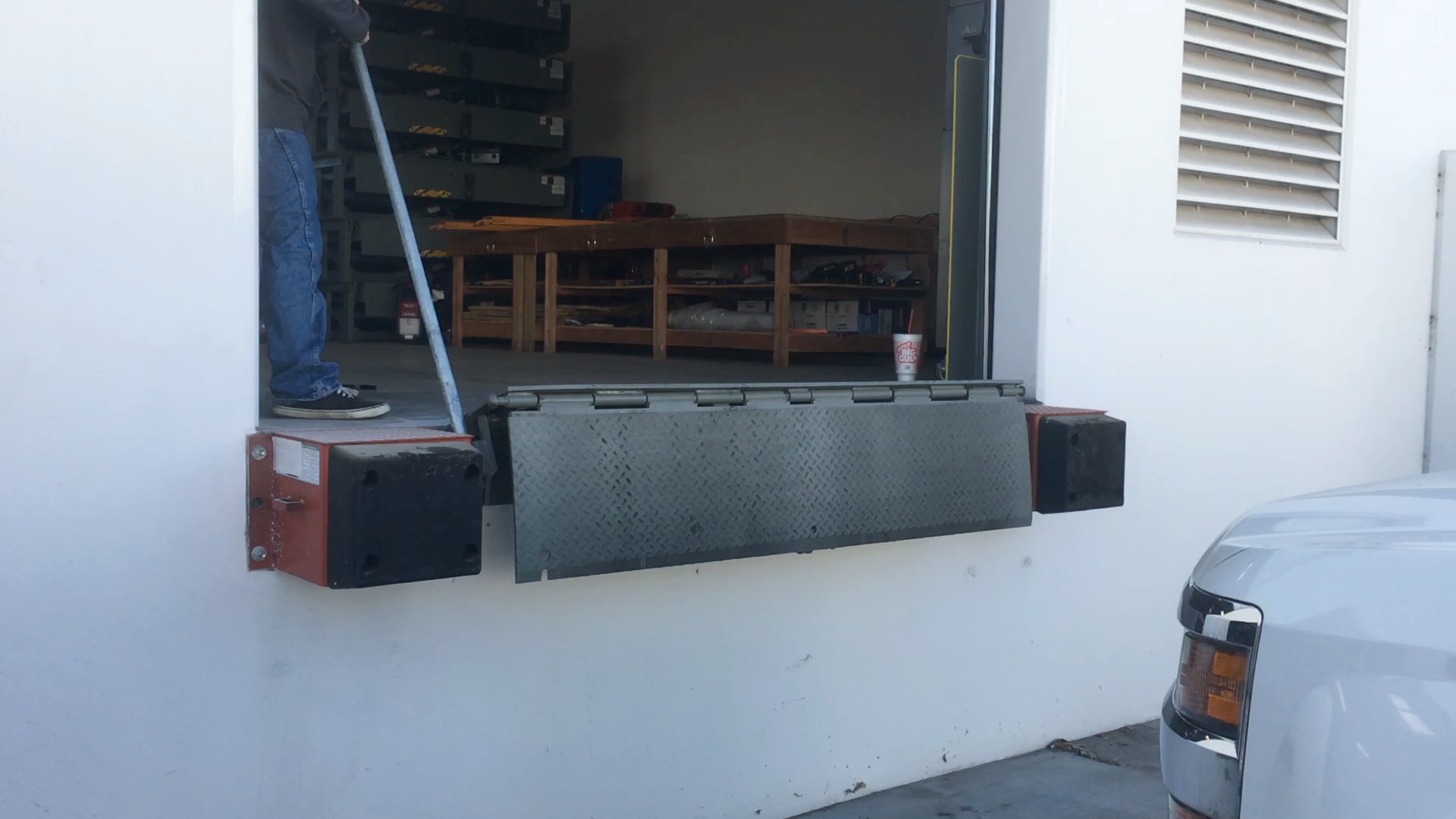
Edge-of-dock levelers provide a cost-effective solution for trailers with bed heights at or near dock level and are designed to serve as a bridge between the dock and the trailer in light-volume loading bays. They are easily mounted directly to the dock face. They offer a convenient working range of +/-3” and an extended maximum operating range of up to +/-5” above or below the dock. While being a smaller leveler, they still provide a smooth transition for foot traffic, pallet jacks, and forklifts.
While edge-of-dock levelers may not be suitable for every loading dock scenario, they provide an economical alternative for docks with limited height variation and lighter loads. By choosing the right edge-of-dock leveler for your specific needs, you can achieve a cost-effective and reliable loading dock operation.
Pit-Style Dock Levelers

Pit levelers, also known as recessed dock levelers, are specifically engineered for recessed warehouse docks and provide a bridge between the dock and the trailer. These levelers are pre-installed in pits formed in the concrete, making them a versatile option for many loading dock applications.
With a standard range of operation of 12 in. Above and 12 in. Below dock height, pit-style dock levelers can accommodate a wide range of load capacities and trailer heights. They are available in both mechanical and powered activation systems, with the latter offering the potential for more economical long-term operation.
Choosing the Right Dock Leveler
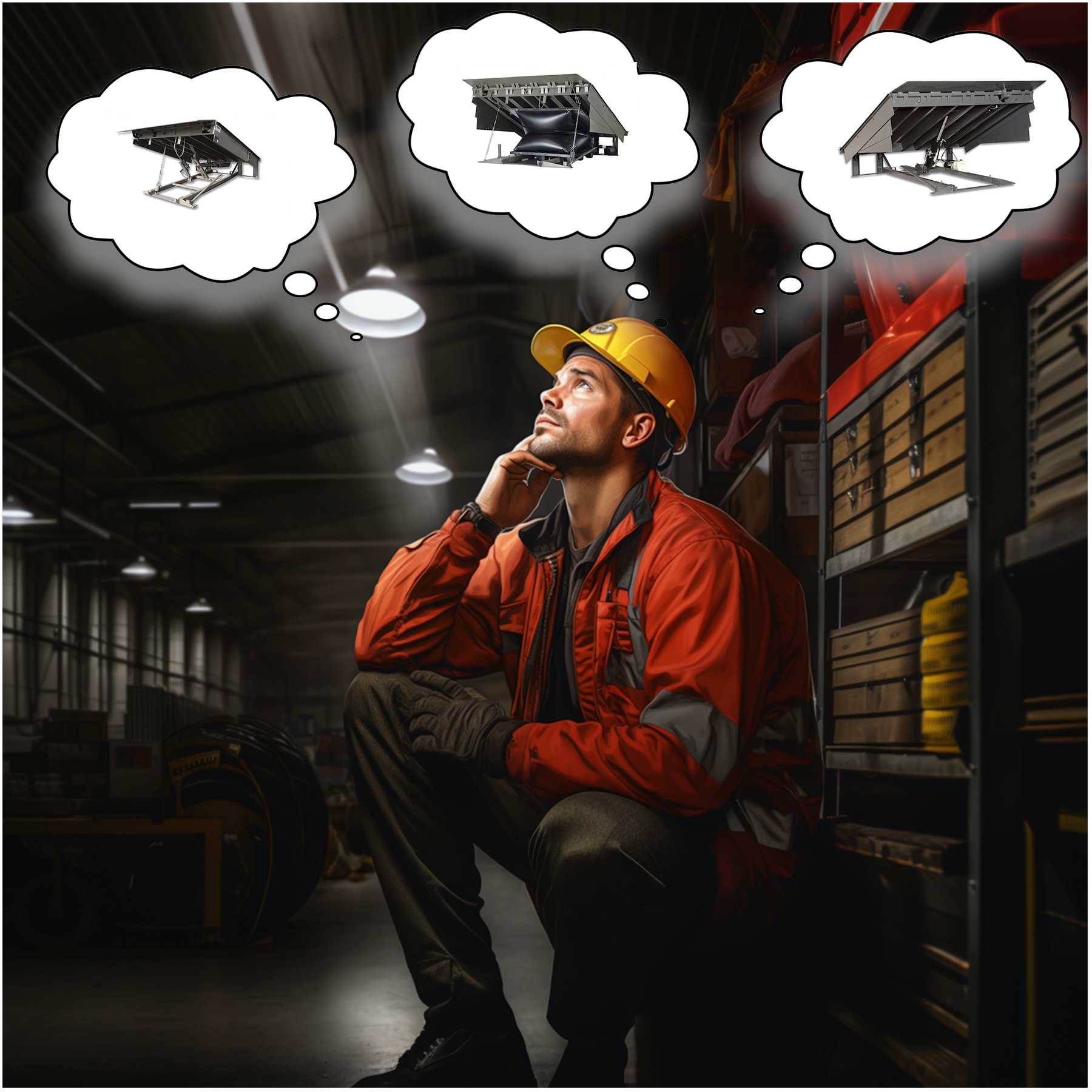
Selecting the right dock leveler for your specific needs requires careful consideration of various factors, such as weight capacity, trailer dimensions, traffic volume, operating environment, and future needs. For example, if your loading dock handles a high volume of traffic and requires a durable and low-maintenance solution, a hydraulic dock leveler may be the best choice.
On the other hand, if your loading dock primarily handles lighter loads and has limited height variation, an edge-of-dock leveler may be more suitable. By carefully assessing your unique requirements and considering the different types of dock levelers available, you can ensure that you select the optimal dock leveler for your loading dock operations.
Dock Leveler Accessories and Safety Equipment
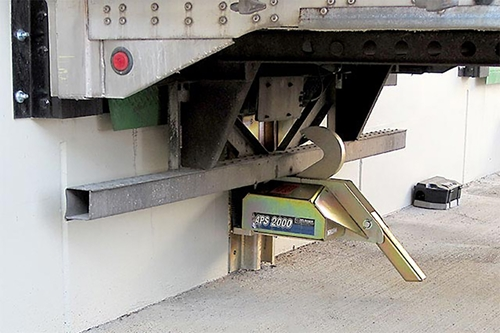
In addition to choosing the right dock leveler, incorporating accessories and safety equipment can further enhance the safety and efficiency of your loading dock area. Some of these accessories include truck restraints, light communication systems, dock bumpers, and dock seals/shelters. These additions can help prevent accidents, streamline operations, and improve overall productivity.
Safety equipment, such as wheel chocks, stabilizing jacks, guardrails, handrails, and barricades, can also be utilized to provide additional protection for workers and equipment during loading and unloading operations. By investing in these accessories and safety equipment, you can create a safer and more efficient loading dock environment.
Maintenance and Ownership Costs
While some dock levelers may have lower upfront costs, it’s essential to consider long-term maintenance and ownership costs when making a decision. Maintenance costs for dock levelers can vary significantly, depending on the type of leveler and its components. For example, the estimated 10-year ownership costs for a mechanical dock leveler are approximately $3,200, while for a hydraulic or air bag leveler, they are around $1,000.
Regular servicing is also vital to ensure the optimal performance and longevity of your dock leveler. It is recommended to service dock levelers every 90 days. Mechanical dock levelers have a stated life expectancy ranging from 5-7 years, depending on usage. That said we've seen people using levelers decades old.
By taking these factors into account, you can make an informed decision regarding which dock leveler best meets your long-term needs and budget.
Installing and Upgrading Dock Levelers
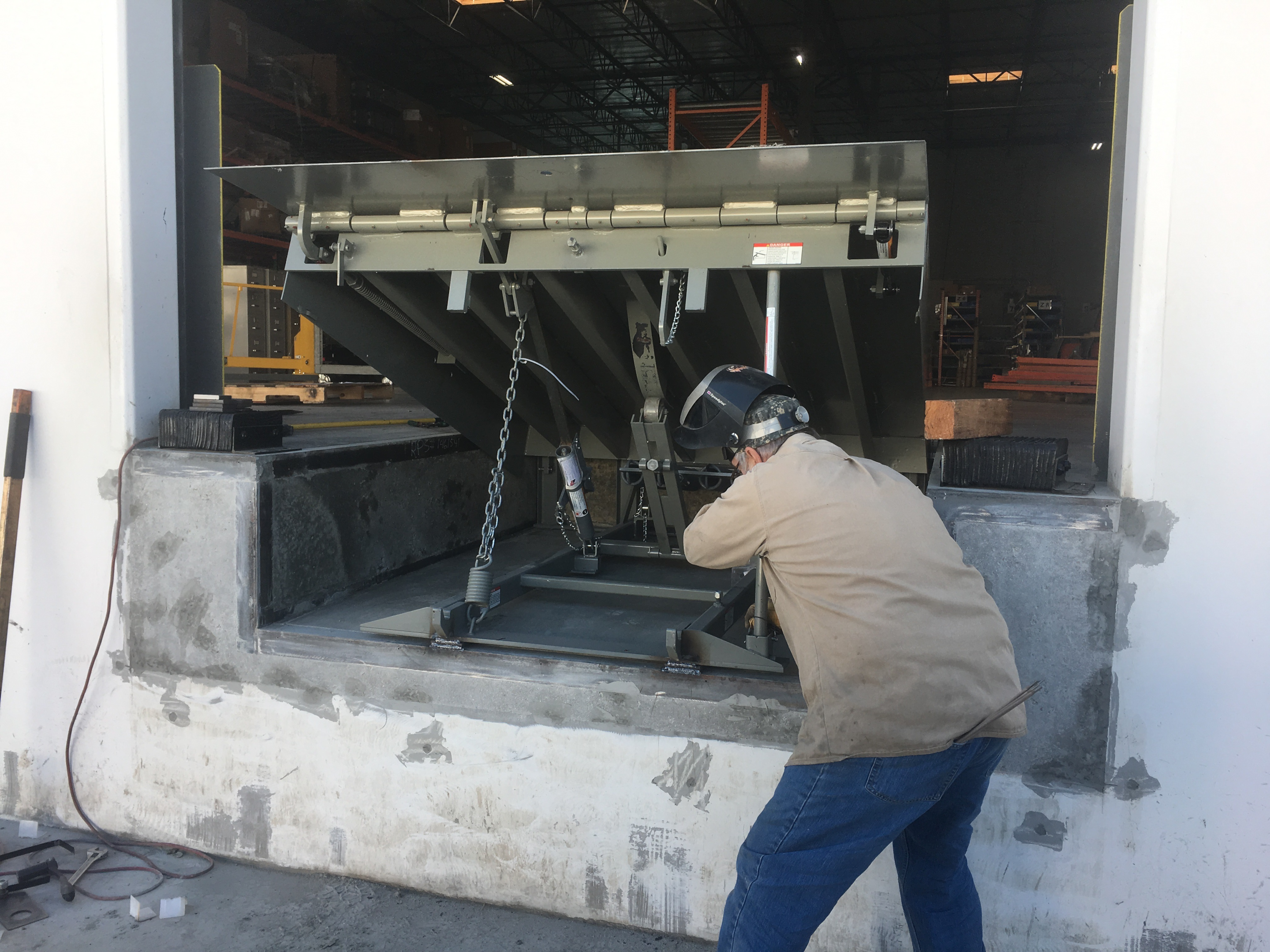
Professional installation and upgrading of dock levelers are crucial to ensure optimal performance, safety, and longevity of the equipment. Adhering to safety procedures and following the dock leveler installation manual are essential during the installation process. Proper installation ensures that the new unit is guided into the pit with even spacing on the sides, and the frame is shimmed to make it flush with the top of the pit.
Upgrading your dock levelers can also optimize loading dock safety, energy, and productivity. By investing in professional installation and upgrading services, you can ensure that your dock levelers continue to operate at peak performance and provide a safe and efficient loading dock environment for years to come.
Summary
In conclusion, loading dock levelers are essential equipment that bridge the gap between the dock and the transport vehicle, ensuring safe and efficient loading and unloading of goods. With various types of dock levelers available, such as hydraulic, mechanical, and air-powered, as well as specialized levelers like vertical storage, edge-of-dock, and pit-style, it’s crucial to carefully consider your specific needs and requirements when choosing the right dock leveler.
By evaluating factors such as weight capacity, trailer dimensions, traffic volume, operating environment, and future needs, and taking into account long-term maintenance and ownership costs, you can make an informed decision that will optimize the safety and efficiency of your loading dock operations. Furthermore, investing in professional installation and upgrading services and incorporating accessories and safety equipment can further enhance the performance and longevity of your dock levelers.
Frequently Asked Questions
What is the disadvantage of dock leveler?
The main disadvantage of a dock leveler is its limited weight capacity, which can be an issue when dealing with large or heavy shipments. Additionally, they require regular maintenance and service to ensure their proper functioning and safety.
Furthermore, hydraulic dock levelers can be more expensive to install than their mechanical counterparts. Ultimately, this can be a costly investment for businesses that may not benefit from its full capabilities.
What is the difference between dock plate and dock leveler?
The primary difference between a dock plate and a dock leveler is that a dock plate is used to bridge small gaps between a loading dock and a trailer, while a dock leveler is designed for larger gaps and allows for a smoother transition between the two surfaces. For more information, please read this post: "Understanding the Difference Between a Dock Plate and a Dock Leveler - A Comprehensive Guide"
Additionally, dock levelers are more secure and can handle much heavier loads than dock plates.
What is the purpose of a dock leveler?
A dock leveler is a crucial part of any loading dock, providing a stable and secure bridge between the ground and the trailer for easy loading and unloading.
It is designed to be durable and reliable, and can be used in a variety of applications. It is also easy to install and maintain, making it a great choice for any business.
The dock leveler is an essential piece of equipment.
What are the main types of dock levelers?
The three main types of dock levelers are hydraulic, mechanical, and air-powered, all offering reliable performance for different loading requirements.
Specialized dock levelers such as vertical storing, edge-of-dock, and pit-style are also available to meet specialized needs.
What factors should be considered when choosing a dock leveler?
When selecting a dock leveler, it is important to consider key elements such as load capacity, trailer size, and expected usage. Furthermore, ensuring that the leveler meets the current and future needs of the operation should be considered.
Finally, environmental factors should also be taken into account.
Why Choose Parts Brite?
Parts Brite proudly provides the highest-quality aftermarket loading dock parts to companies across the United States. We ship from warehouses in California and Wisconsin, and our sales headquarters is located in Southern California. Contact us today at info@partsbrite.com or 1-855-PARTSBRITE (1-855-727-8727).

Owner, Parts Brite
My background is in Electrical and Software Engineering, but since I started PartsBrite.com in 2016, I've focused on everything related to docks.
My team and I are here to help those looking to repair or replace their dock levelers, bumpers, door, and door lights.
1-855-PartsBrite | partsbrite.com | paul@partsbrite.com
Leave a comment